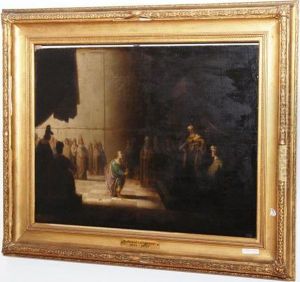Gebrand V. Eckhout Paintings
Albert Eckhout was a Dutch portrait and still life painter who played a significant role in documenting the inhabitants and nature of Dutch Brazil during the 17th century. Born in Groningen, Netherlands, in 1621, Eckhout was active during the Dutch Golden Age of painting, a period characterized by a great wealth of artistic talent and innovation in the Netherlands.
Eckhout is best known for his work during the period when he was part of the entourage of Johan Maurits van Nassau-Siegen, the governor of the Dutch colony in Brazil known as New Holland. From 1637 to 1644, Eckhout lived in Brazil, where he produced a series of ethnographic and botanical paintings that give an important historical insight into the region and its people during the time of Dutch colonization.
His ethnographic works are particularly notable for their detailed depiction of the indigenous peoples of Brazil as well as the African slaves who were brought to the region. These paintings are considered some of the earliest realistic portrayals of these groups in their own environment. Furthermore, Eckhout's still lifes of Brazilian fruits, vegetables, and animals added to the knowledge of the natural world during a time when Europe was greatly interested in the exotic wonders of newly explored territories.
After returning to the Netherlands in 1644, Eckhout continued to work as a painter, but little is documented about this later period of his life. He passed away in Groningen in 1674. Although not as well-known as some of his contemporaries, Eckhout's work has been reevaluated by art historians and is now recognized for its ethnographic significance and contribution to the understanding of cultural and natural history in the early modern period.
